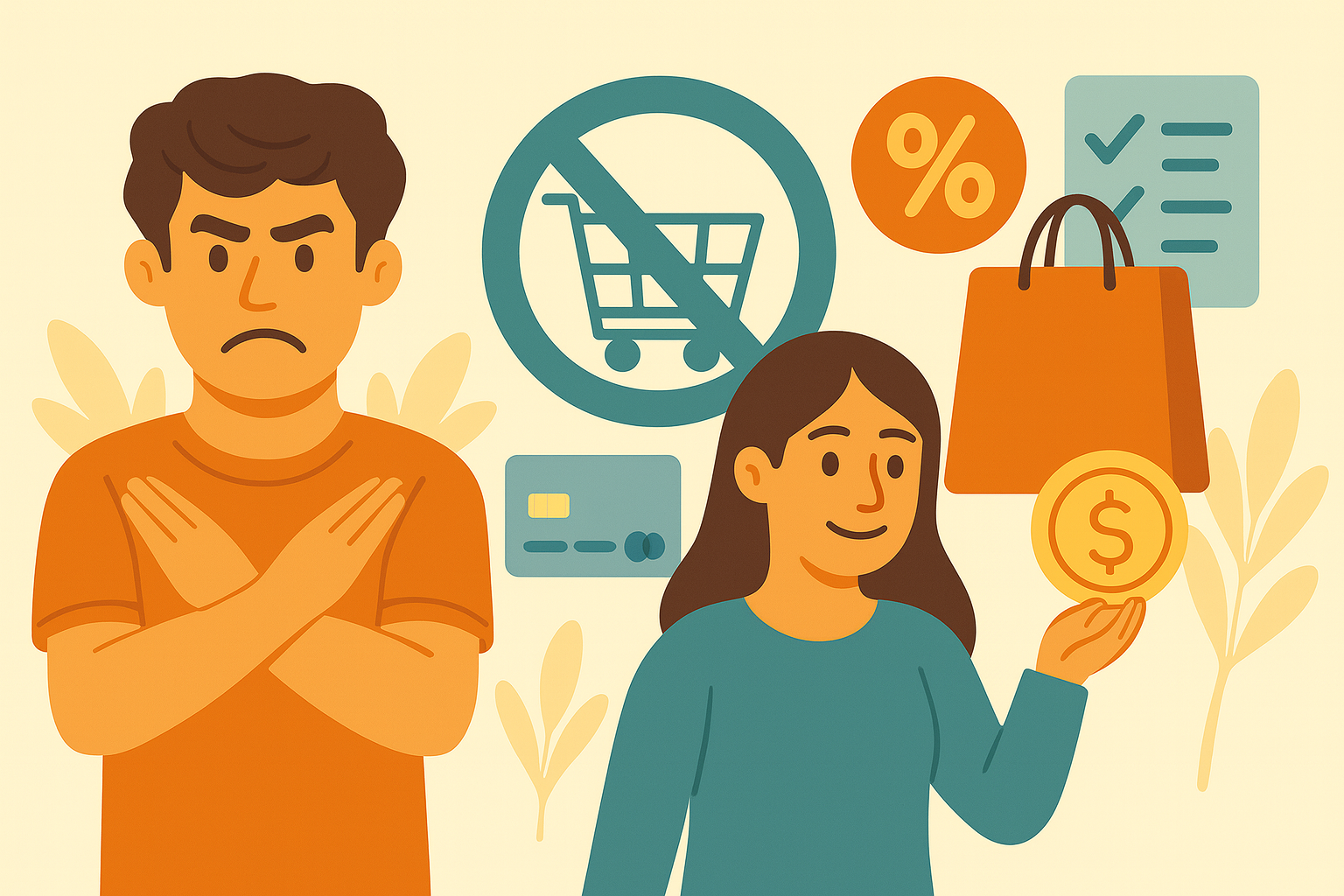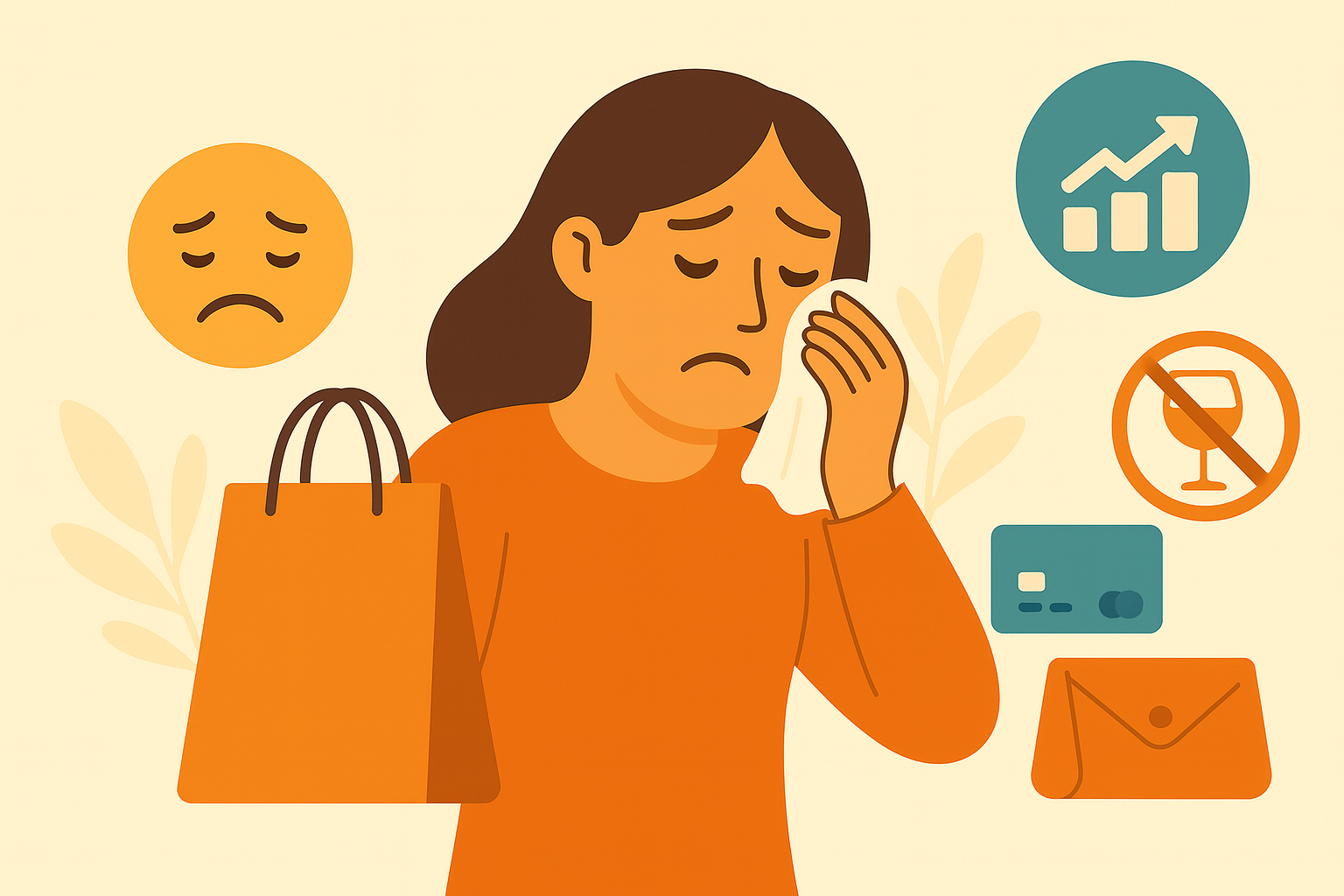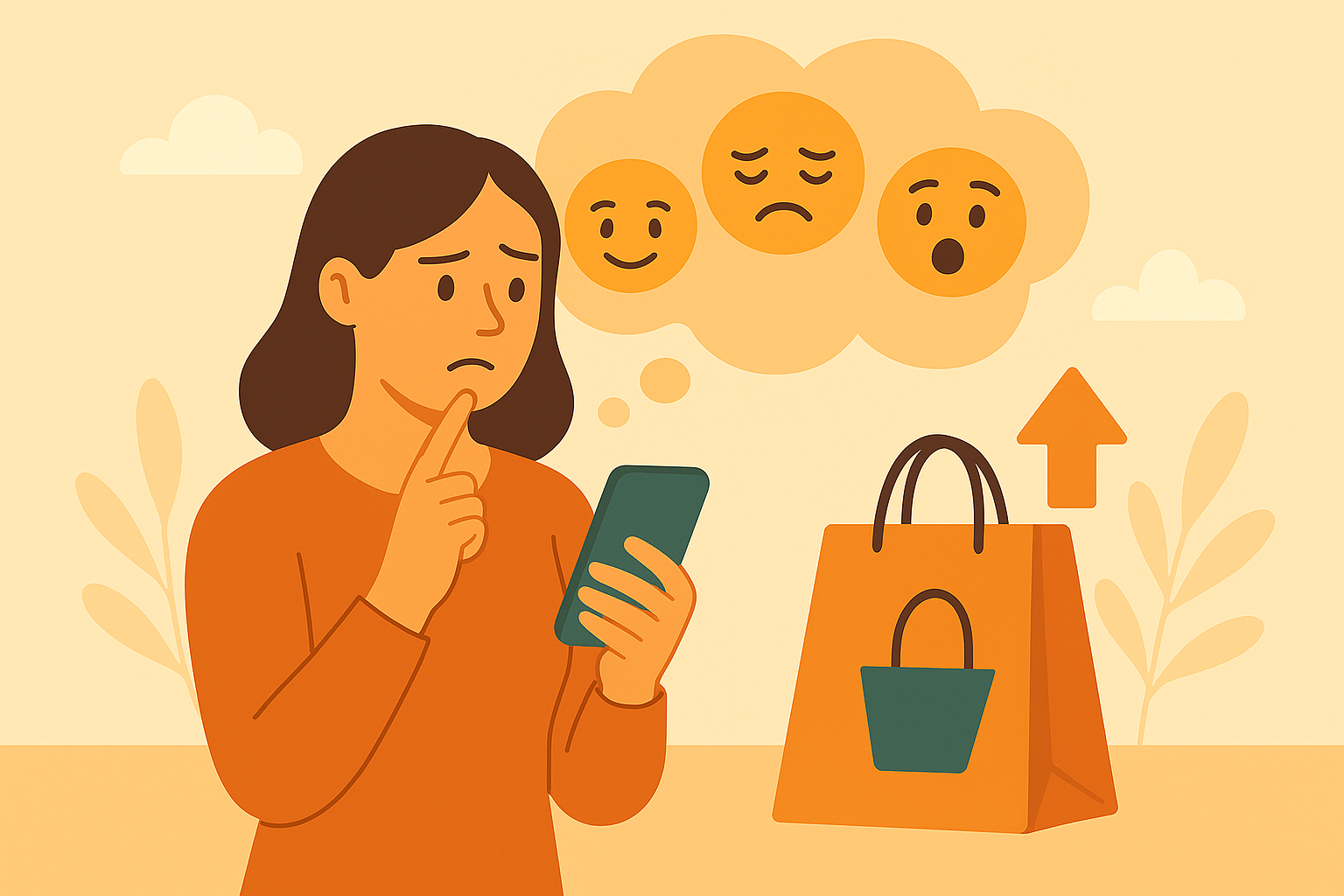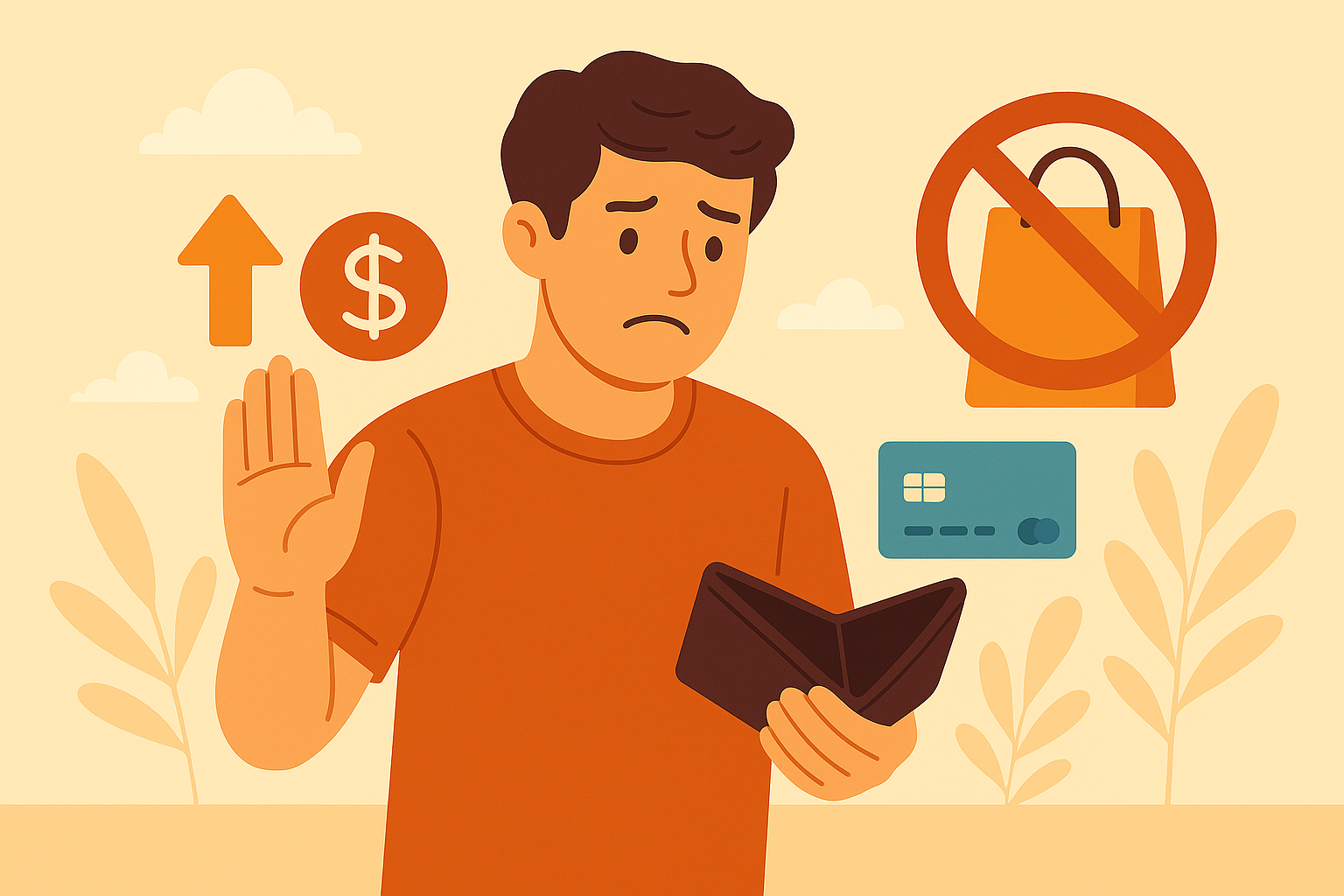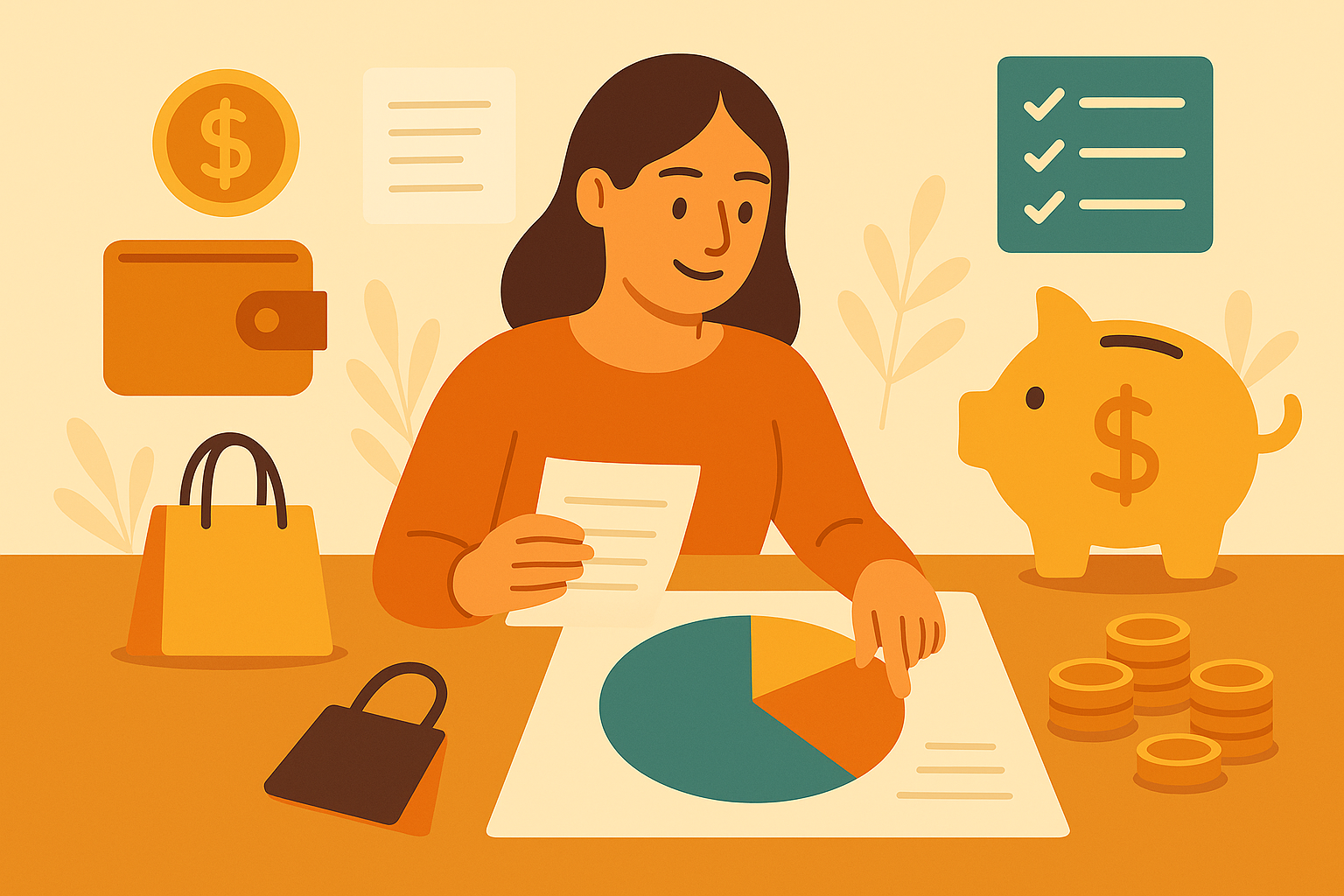Let me guess: You’ve done it again. Maybe it was scrolling through Instagram late at night when you saw those “must-have” wireless earbuds on sale. Or maybe it was walking into Target for toothpaste and walking out with a cart full of things you didn’t plan to buy. Sound familiar? That’s impulse buying in action—and if you’re wondering how to stop impulse buying once and for all, you’re definitely not alone.
Here’s the thing: It’s not just one purchase that’s the problem. It’s the pattern. Week after week, month after month, those “little” impulse buys add up. And if you’re finally starting to realize that your spending habits are keeping you from the financial goals you actually care about, you’re in exactly the right place.
Today, we’re diving into how to stop impulse buying—not by becoming some robot who never has fun, but by being smarter about where your money actually goes.
What Exactly Is Impulse Buying?
Impulse buying is when you buy something you hadn’t planned to purchase. It’s that “ooh, shiny!” moment when your brain completely bypasses the rational thinking part and goes straight to “add to cart.”
It could be:
- Grabbing candy at the checkout line
- Buying clothes because they’re on sale (even though you don’t need them)
- Ordering takeout when you have food at home
- Clicking “buy” on that late-night Amazon scroll
Here’s the wild part: The average American spends about $150 to $300 per month on impulse purchases. That’s $1,800 to $3,600 a year! Imagine what you could do with that money instead—pay off debt, build your emergency fund, or finally take that vacation you’ve been dreaming about.
Why Do We Impulse Buy?
Before we get into how to stop impulse buying, let’s talk about WHY it happens. Because trust me, understanding your triggers is half the battle.
1. Emotions Are Running the Show
Ever had a rough day at work and thought, “I deserve a little treat”? Yeah, that’s retail therapy in action. When we’re stressed, sad, bored, or even super happy, shopping gives us a quick dopamine hit. It feels GOOD in the moment.
The problem? That feeling fades faster than your phone battery, and you’re left with stuff you don’t need and a smaller bank account.
2. FOMO Is Real
Social media makes this worse. You see your favorite influencer raving about a product, or your friend posts about their new purchase, and suddenly you NEED it too. Fear of missing out pushes us to buy things we wouldn’t have even thought about otherwise. Learning how to stop impulse buying means recognizing when FOMO is driving your decisions.
3. Sales and Deals Mess With Our Heads
“50% off!” “Limited time only!” “Free shipping on orders over $50!”
Marketers are REALLY good at their jobs. They know exactly how to make us feel like we’re getting a deal, even when we’re actually just spending money we didn’t plan to spend. Just because something is on sale doesn’t mean it’s saving you money if you weren’t going to buy it anyway.
4. It’s Way Too Easy
Remember when you actually had to leave your house, drive to a store, and physically hand over money to buy something? Now you can purchase anything with literally two clicks on your phone. Amazon’s one-click ordering? Genius for them, dangerous for our wallets.
The Real Cost of Impulse Buying
Look, nobody’s saying you can’t grab a coffee or treat yourself sometimes. But when impulse buying becomes a habit, the real cost goes way beyond just the money you’re spending.
When you regularly impulse buy, figuring out how to stop it is crucial because you’re actually losing:
- Progress toward what matters. Every unplanned purchase is money that could’ve gone toward something you actually care about achieving.
- Peace of mind. You know that sinking feeling when you check your bank account and think “where did all my money go?” That stress takes a toll.
- Space in your life. All that stuff you don’t actually need or use? It creates both physical and mental clutter.
The hard truth is that small purchases add up faster than you think. Spending a few thousand dollars a year on random stuff you barely use means giving up real opportunities to improve your financial situation.
7 Proven Ways to Stop Impulse Buying
Okay, enough about the problem. Let’s talk solutions. These strategies have helped countless people save thousands of dollars, and they can work for you too.
1. Use the 24-Hour Rule
This one is a game-changer and the most effective strategy for how to stop impulse buying. When you feel the urge to buy something that’s not an absolute necessity, WAIT. Give yourself 24 hours before making the purchase.
Here’s what happens: That intense “I need this NOW” feeling? It usually fades. After a day, you’ll often realize you don’t actually want or need the item. And if you still want it after 24 hours, then at least it’s a more conscious decision rather than a knee-jerk impulse.
For bigger purchases (anything over $100), I extend this to 48 hours or even a week. The more expensive it is, the more time you should give yourself to really think it through.
Pro tip: When you’re shopping online, add items to your cart but don’t check out. Just leave them there. I’ve “saved” so much money by abandoning carts full of stuff I would’ve regretted buying.
2. Delete Your Saved Payment Info
I know, I know. This sounds annoying. But hear me out.
When your credit card info is saved on every website and app, buying something takes zero effort. It’s TOO easy. By removing that saved information, you create friction in the buying process.
Having to physically get up, grab your wallet, and type in your card number gives your brain time to ask, “Do I really need this?” More often than not, that extra 30 seconds of effort is enough to snap you out of impulse mode.
Do this for:
- Amazon
- Target
- Your favorite clothing stores
- Food delivery apps
- Literally anywhere you shop online
Yes, it’s less convenient. That’s exactly the point.
3. Make a Shopping List And Actually Stick to It
This seems basic, but it WORKS. Before you go shopping—whether it’s groceries, Target, or an online store—make a list of exactly what you need.
When you’re at the store, buy ONLY what’s on the list. Nothing else. Skip the cute home decor, the snacks you don’t need, and definitely skip that thing that’s on clearance.
People who stick to shopping lists consistently report spending $50-75 less per grocery trip. Those “little extras” add up fast!
The same principle applies online. Before you start browsing, write down what you’re actually looking for. If it’s not on the list, you don’t buy it.
4. Unsubscribe From Marketing Emails
If you’re not seeing the temptation, you can’t be tempted. It’s that simple.
Those promotional emails flooding your inbox? They’re literally designed to make you buy things. “Flash sale!” “Your favorites are back in stock!”
Go on an unsubscribe spree. Be ruthless. If a store’s emails are triggering your impulse buying, cut them off. You can always resubscribe if you genuinely need something from them later.
Consider keeping subscriptions ONLY for stores where you regularly need to buy necessities (like your grocery store for weekly deals). Everything else? Hit that unsubscribe button.
Bonus: This also declutters your inbox, which feels amazing.
5. Ask Yourself the Big Questions
Before you buy ANYTHING, run through these questions:
- Do I actually need this, or do I just want it? There’s nothing wrong with wants, but be honest about which category this falls into.
- Will I still care about this in a week? A month? A year? If the answer is probably not, don’t buy it.
- Do I already own something similar? We’ve all bought clothes that are basically identical to three other things in our closet.
- How many hours did I work to earn the money for this? This one hits different. If something costs $60 and you make $20/hour, that’s 3 hours of your life. Is it worth it?
- Does this align with my financial goals? Remember, every purchase is a choice between this item and your bigger goals.
These questions have stopped me from making so many unnecessary purchases. They force you to pause and actually think rather than just react.
6. Set a “Fun Money” Budget
Here’s the thing: You can’t (and shouldn’t) cut out ALL discretionary spending. That’s not sustainable, and it’s not fun.
Instead, give yourself a set amount of money each month specifically for impulse purchases or treats. This is your guilt-free spending money.
Maybe it’s $50, maybe it’s $200—whatever fits your budget. The key is that once it’s gone, it’s gone until next month. This way, you can still enjoy little splurges without derailing your entire financial plan.
Some people find it helpful to have a separate checking account just for fun money. When that account hits zero, you know it’s time to chill until next month. It’s a simple way to stay on track while still enjoying life.
7. Identify Your Triggers and Avoid Them
Everyone has different impulse buying triggers. Maybe it’s late-night scrolling, being in Target without a list, or shopping when you’re stressed. Whatever yours are, identifying them is key.
Take a week to track when and why you make impulse purchases. You’ll probably notice patterns:
- Certain times of day
- Specific emotional states
- Particular stores or websites
- Being with certain people who encourage spending
Once you know your triggers, you can actively avoid them or prepare for them. If you impulse buy when you’re stressed, have other stress-relief activities ready (going for a walk, calling a friend, working out). If certain stores are dangerous for your wallet, avoid them unless you have a specific reason to be there.
What About When You Mess Up?
Let’s be real: You’re going to slip up sometimes. We all do. Even people who’ve gotten really good at avoiding impulse purchases still make them occasionally.
When it happens, don’t beat yourself up. Guilt doesn’t help anything. Instead:
- Acknowledge it. “Okay, I impulse bought. That happened.”
- Learn from it. What triggered it? How can you avoid it next time?
- Move forward. One impulse purchase doesn’t ruin your progress. Don’t let it spiral into a “well, I already messed up so I might as well keep going” situation.
If you can return the item, do it. Most stores have pretty generous return policies. There’s no shame in returning something—it’s better than keeping it and being stuck with the regret.
Why This Actually Matters
Learning how to stop impulse buying isn’t about becoming some super-frugal person who never spends money on anything fun. It’s about being INTENTIONAL with your money.
When you stop throwing money at random impulse purchases, you create space for the things that actually matter to you. Maybe that’s:
- Building real financial security
- Saving for something you genuinely want
- Having less money stress in your daily life
- Feeling in control of your finances instead of wondering where it all went
The goal isn’t perfection. It’s just being more deliberate about your choices so your money actually goes toward things that improve your life.
Where to Start
If you’re ready to make a change, here are some suggestions for getting started:
Pick one or two strategies to try first. Don’t overwhelm yourself by trying to implement all seven at once. Start with whichever ones feel most relevant to your situation.
Track your spending for a week or two. Just write down every purchase. Sometimes awareness alone is enough to start changing your habits.
Figure out your baseline. Look at your bank or credit card statements from the last month. How much went to impulse purchases? This gives you a starting point to measure progress.
Choose one thing you’re working toward financially. Write it down somewhere you’ll see it. When temptation strikes, that reminder can help you pause.
Remember, this isn’t about being perfect. It’s about being better than you were before. Small improvements add up over time.
You’ve Got This
Here’s the truth: Nobody has this all figured out perfectly. We all make impulse purchases sometimes. The difference is just being more aware of it and making better choices more often than not.
Learning how to stop impulse buying can genuinely change your relationship with money. Less stress, more savings, and most importantly—feeling like you’re actually in control instead of wondering where it all went.
The fact that you’re here reading this? That’s already the first step. You’re paying attention, you’re recognizing the pattern, and you’re looking for solutions. That’s huge.
What impulse buying trigger hits you the hardest? Think about it, identify it, and you’re already on your way to changing it.
Your money is yours. Make it work for what you actually want, not for random stuff that seemed like a good idea at the time.


